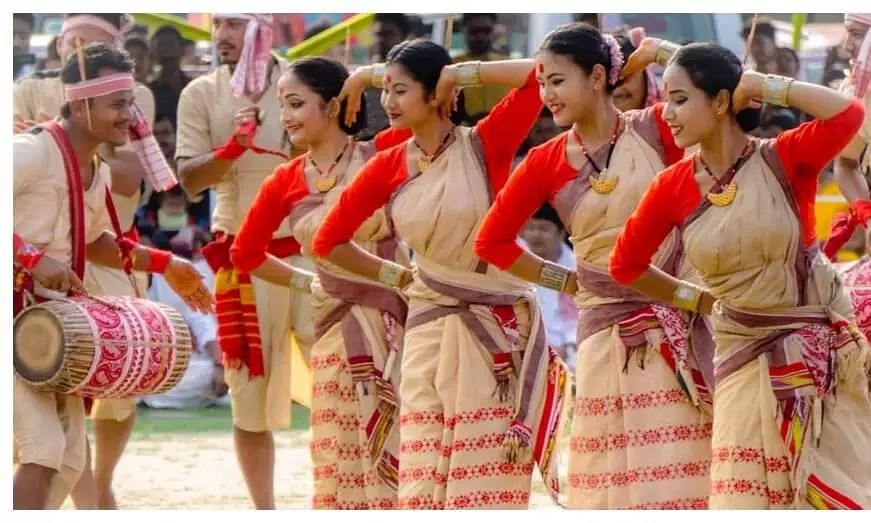Culture Of Assam
The culture of Assam is traditionally a hybrid one, developed due to cultural assimilation of different ethno-cultural groups under various political-economic systems in different periods of its history.The roots of culture in Assam goes back almost five thousand years when the first wave of humans, the Austroasiatic people reached the Brahmaputra valley. They mixed with the later immigrant Tibeto-Burman and the Indo-Aryan peoples in prehistoric times. The last wave of migration was that of the Tai/Shan who later formed the idea of Assamese culture and its identity. The Ahoms, later on, brought some more Indo-Aryans like the Assamese Brahmins and Ganaks and Assamese Kayasthas to Assam.

The roots of culture in Assam goes back almost five thousand years when the first wave of humans, the Austroasiatic people reached the Brahmaputra valley. They mixed with the later immigrant Tibeto-Burman and the Indo-Aryan peoples in prehistoric times. The last wave of migration was that of the Tai/Shan who later formed the idea of Assamese culture and its identity. The Ahoms, later on, brought some more Indo-Aryans like the Assamese Brahmins and Ganaks and Assamese Kayasthas to Assam. It is believed that Assamese culture developed its roots over 750 years as the country of Kamarupa during the first millennium AD of Bodo-Kachari people assimilation with Aryan which is debatable as the idea of Assam as an entity was not present. The first 300 years of Kamarupa was under the great Varman dynasty, 250 years under the Mlechchha dynasty and 200 years under the Pala dynasty. The records of many aspects of the language, traditional crafts (silk, lace, gold, bronze, etc.) are available in different forms. When the Tai-Shans entered the region in 1228 under the leadership of Sukaphaa to establish Ahom kingdom in Assam for the next 600 years, again a new chapter of cultural assimilation was written, and thus the modern form of Assamese culture developed. The original Tai-Shans assimilated with the local culture adopted the language on one hand and on the other also influenced the culture with the elements from their own. Similarly, the Chutiya kingdom in eastern Assam, the Koch Kingdom in western Assam and the medieval Kachari and Jaintia kingdoms in southern Assam provided stages for assimilation at different intensities and with different cultural-mixes. The Vaishnava Movement, a 15th-century religio-cultural movement under the leadership of Srimanta Sankardeva and his disciples, has provided another dimension to the Assamese culture. A renewed Hinduisation in local forms took place, which was initially greatly supported by the Koch and later by the Ahom Kingdoms. The resultant social institutions such as namghar and sattra - the Vaishnav Hermitage have become part of the Assamese way of life. The movement contributed greatly towards language, literature, and performing and fine arts. On many occasions, the Vaishnav Movement attempted to introduce alien cultural attributes and modify the way of life of the common people. Brajavali, a language specially created by introducing words from other Indian languages, failed as a language but left its traces on the Assamese language. Moreover, new alien rules were also introduced changing people's food habits and other aspects of cultural life. This had a greater impact on the alienation of many ethnocultural and political groups in the later periods